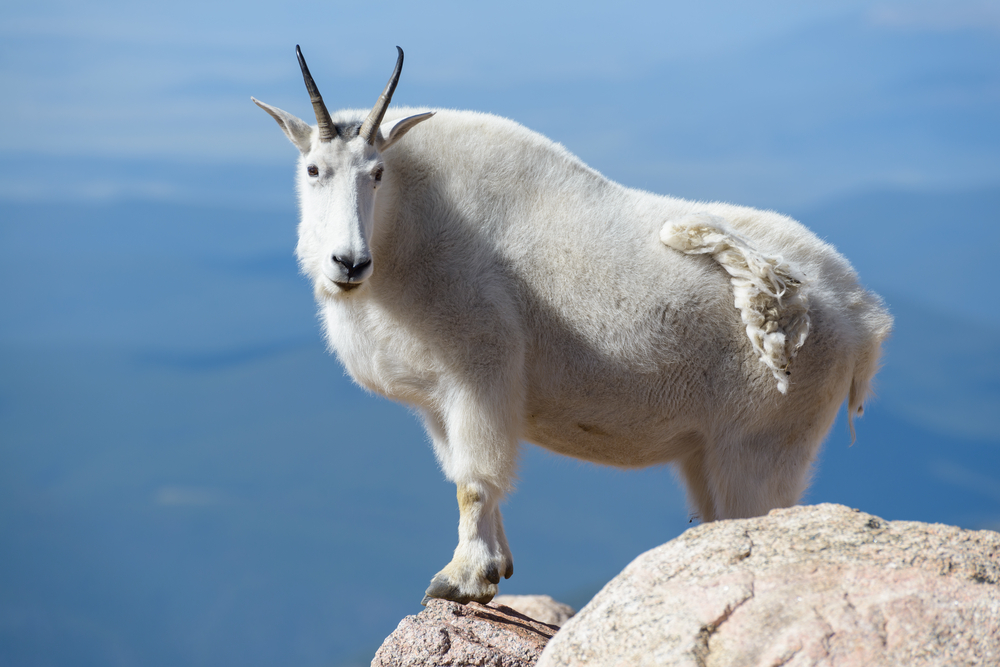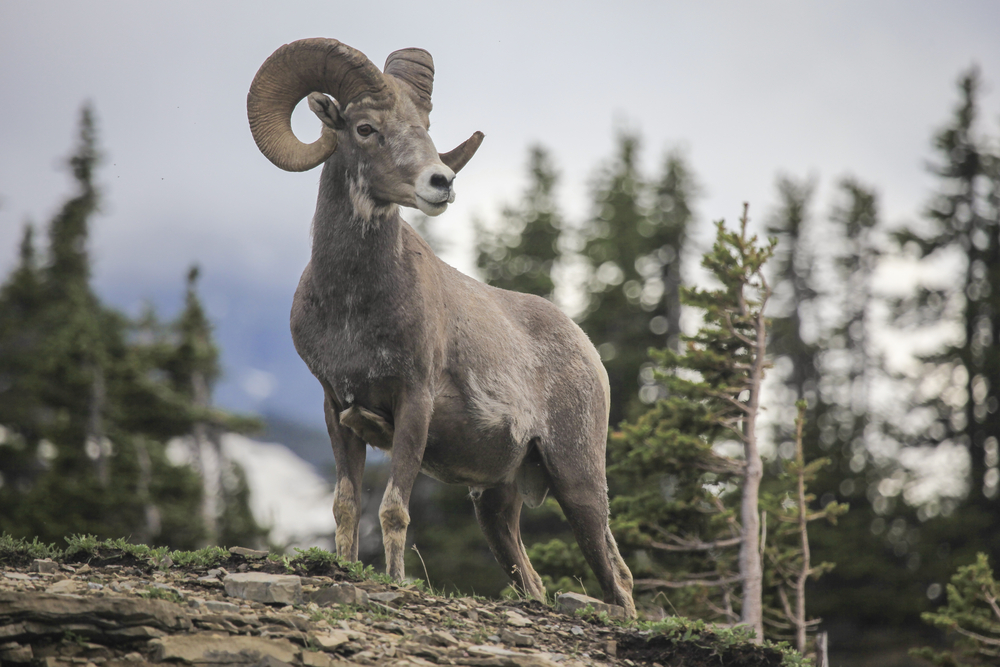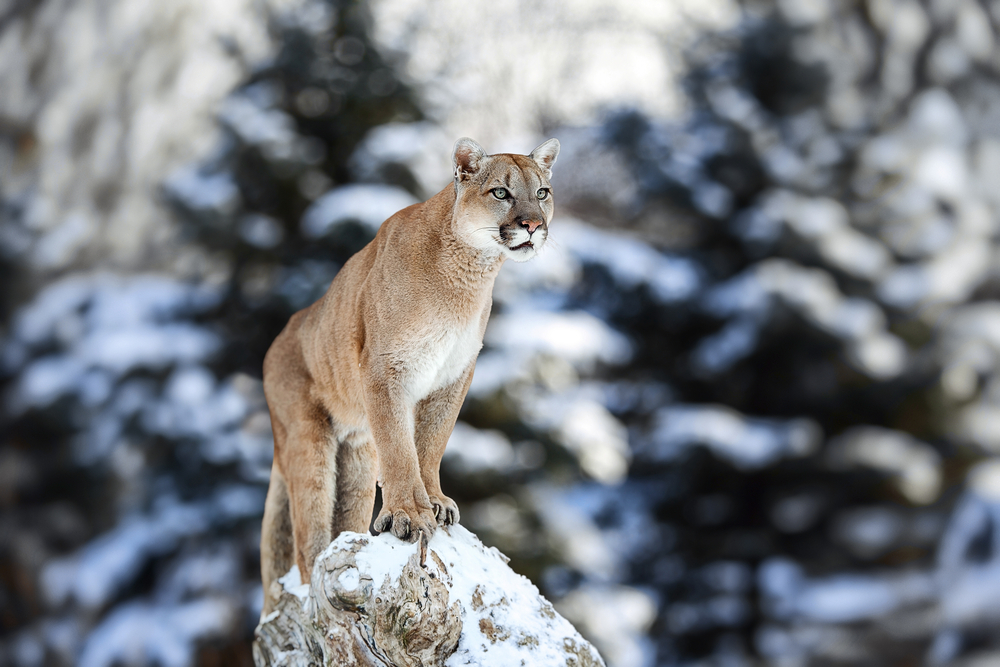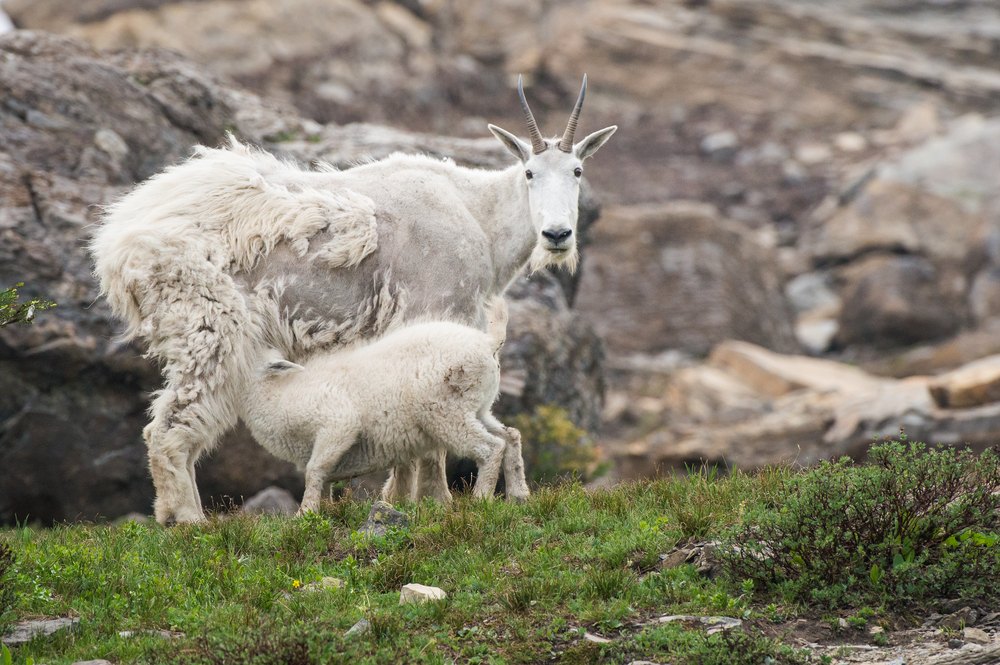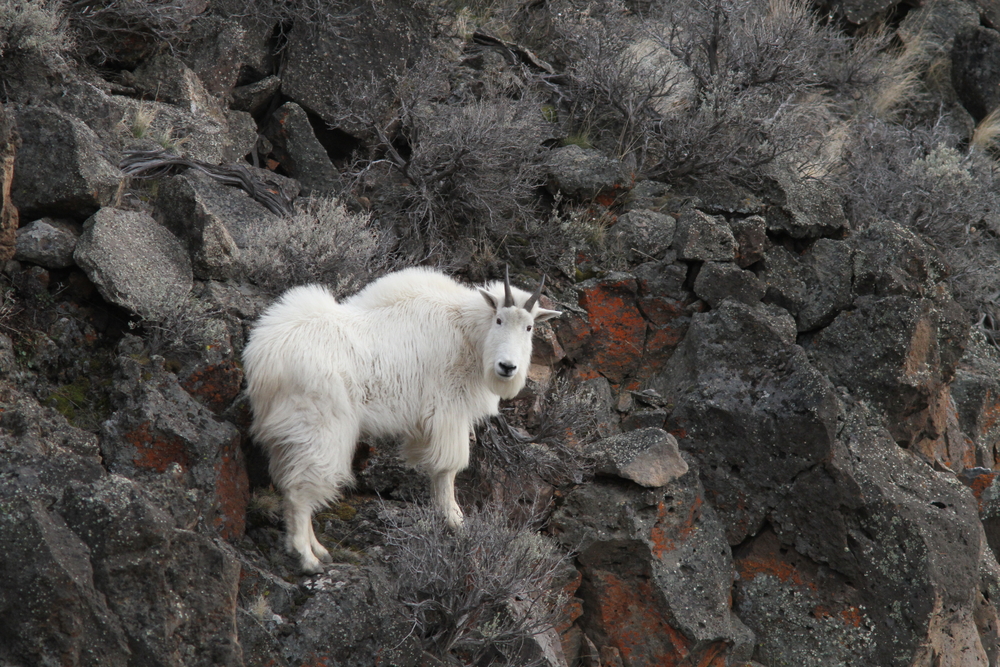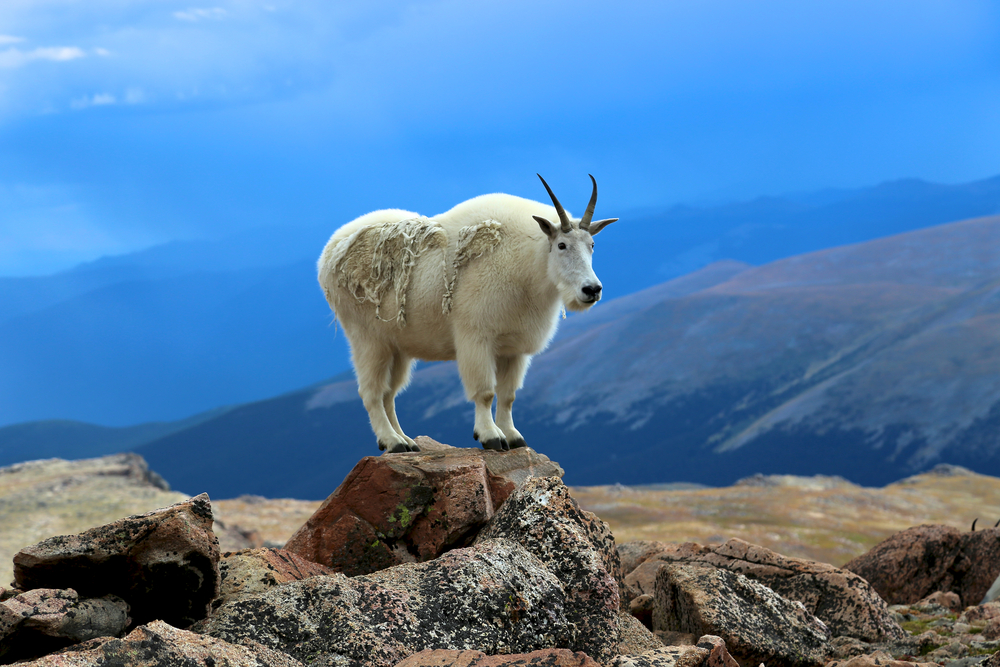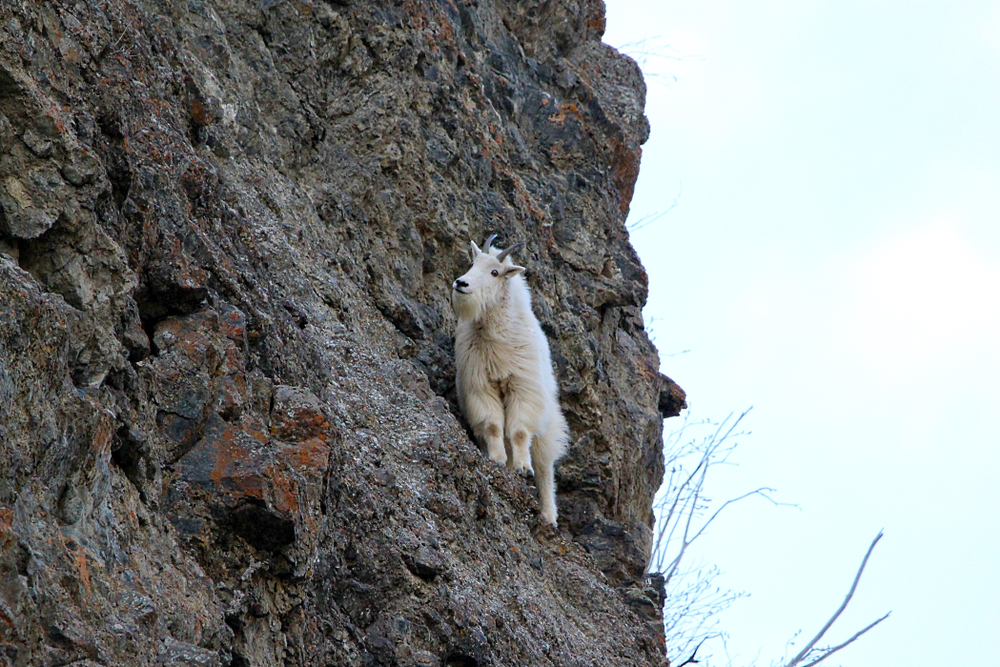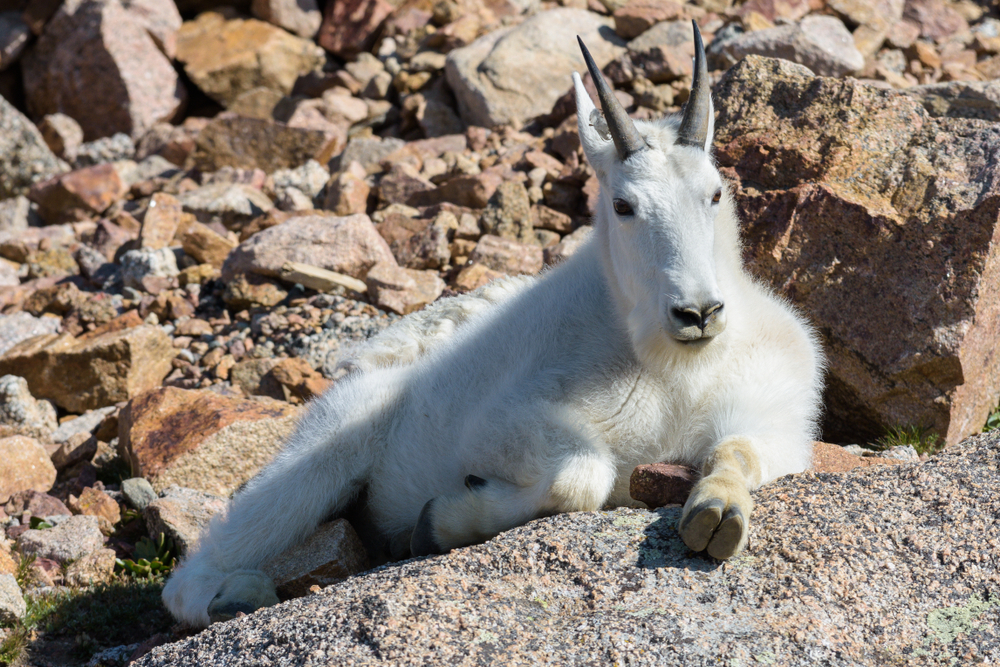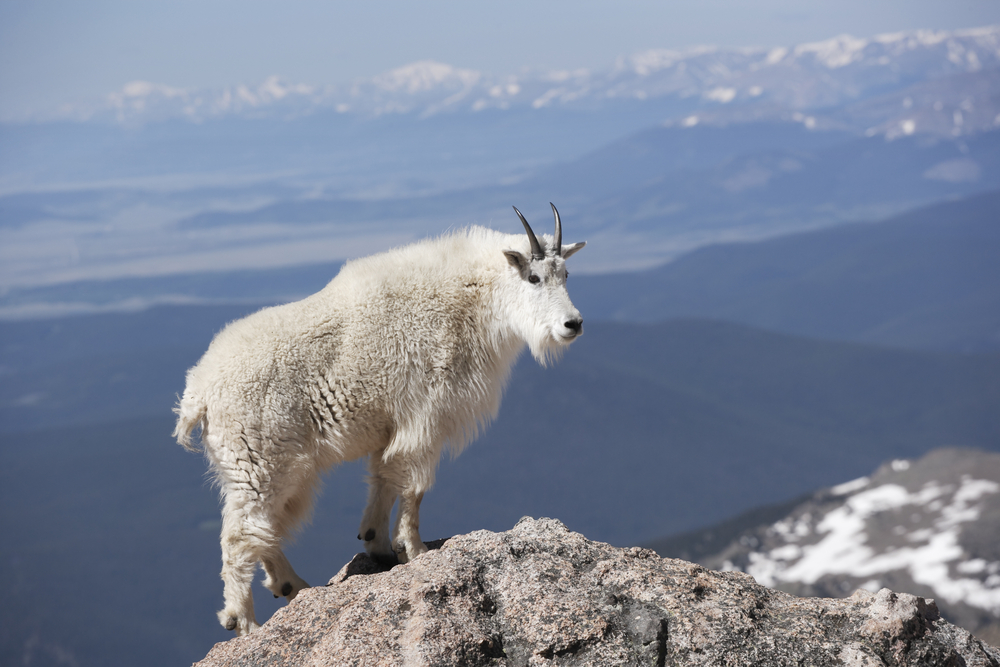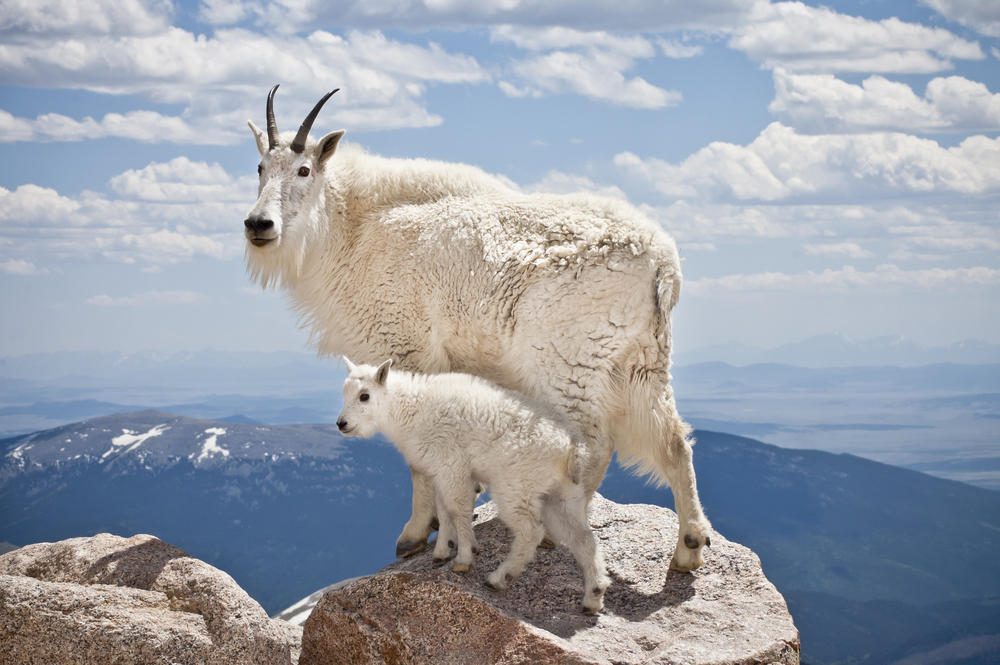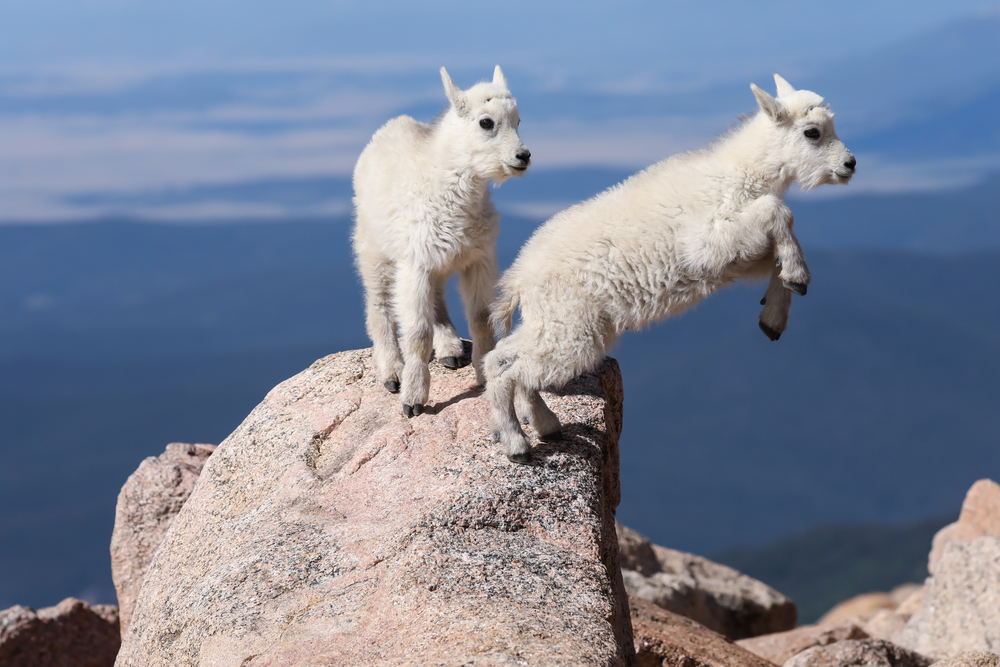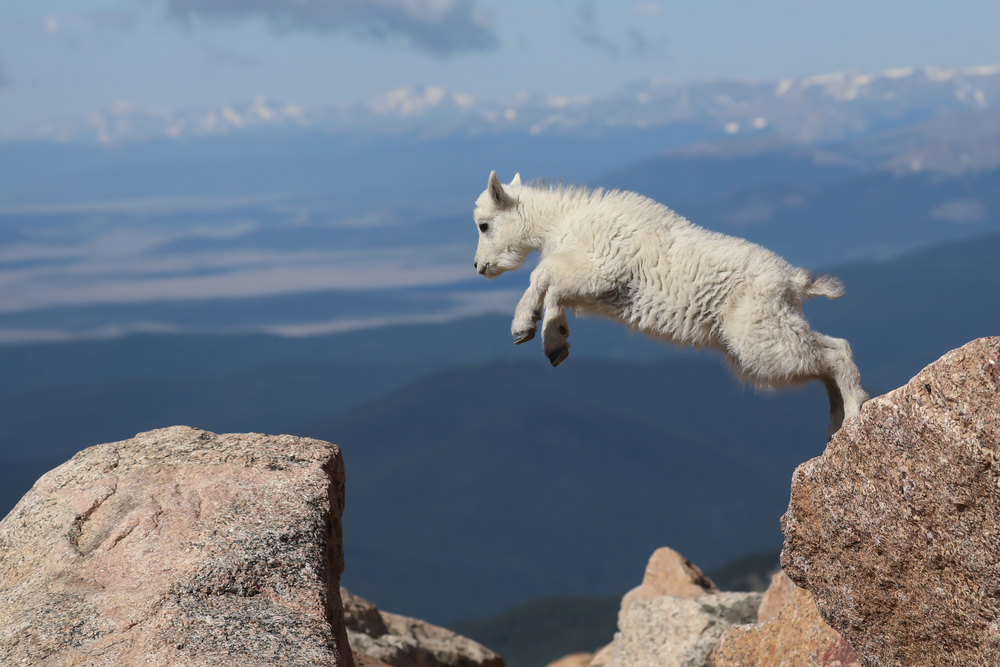About
The Mountain Goat (Oreamnos americanus) is a remarkable and rugged species that thrives in the challenging terrain of North America’s mountainous regions. As a member of the Animal Kingdom, it belongs to the class Mammalia, order Artiodactyla, and family Bovidae, which makes it a distant relative of other ungulates like domestic cattle, bison, and antelope.
The Mountain goat is well adapted to its alpine habitats. They are known for their distinctive appearance, characterized by thick white fur, a hump-like shoulder muscle, and impressive curved horns. These hooved mammals are uniquely designed for navigating steep and rocky terrain, with cloven hooves featuring a rubbery core that provides excellent traction on rocky surfaces.
These sure-footed creatures are primarily herbivores, grazing on alpine plants and vegetation at high altitudes. They are known for their ability to scale steep cliffs and navigate narrow ledges with ease, which provides them with access to food sources that many other herbivores cannot reach.
Mountain goats‘ remarkable adaptations and ability to thrive in challenging environments make them a symbol of rugged wilderness and an iconic species in North America’s mountainous landscapes.
Conservation Concerns:
While mountain goat populations are relatively stable across much of their range, they face threats from habitat loss, human disturbance, and disease transmission from domestic livestock. Climate change also poses risks by altering mountain ecosystems and reducing suitable habitats for these specialized animals.
The International Union for Conservation of Nature (IUCN) Red List currently categorizes the Mountain Goat as of least concern. However, localized declines have been reported in some areas, prompting conservation efforts to protect critical habitats, mitigate human-wildlife conflicts, and monitor population trends.
Physical Characteristics
The Mountain Goat (Oreamnos americanus), also known as the Rocky Mountain Goat, is a sturdy, hoofed animal native to the mountainous regions of North America. Adapted to life in challenging terrain, mountain goats are known for their exceptional climbing abilities and agility on steep, rocky slopes. They inhabit alpine and subalpine environments, often seen at elevations above the tree line where few predators dare to venture. Here’s a detailed overview of the physical characteristics of the mountain goat:
Size
- Body Length: Adult mountain goats have a body length ranging from 47 to 70 inches (120 to 178 centimeters).
- Height at Shoulder: They stand about 35 to 45 inches (90 to 115 centimeters) tall at the shoulder.
- Weight: Males (billies) typically weigh between 180 to 300 pounds (82 to 136 kilograms), whereas females (nannies) are lighter, usually weighing between 150 to 200 pounds (68 to 91 kilograms).
Physical Characteristics
- Body Shape: Mountain goats have a robust and muscular build, with a thick body, short legs, and a broad chest, enabling them to navigate steep and rugged terrains with ease.
- Coat: They possess a dense, double-layered coat that provides insulation against the cold mountainous environment. The outer layer consists of coarse guard hairs, while the undercoat is soft and woolly. Their coat is predominantly white, which helps them blend into the snowy and rocky backgrounds of their habitat.
- Horns: Both males and females have black, saber-like horns that curve slightly backwards and can grow up to 12 inches (30 centimeters) in length. The horns are used for defense against predators and during mating season contests.
- Hooves: Their hooves are specially adapted for climbing, with a hard outer edge and a soft, concave pad in the center that acts like a suction cup to grip the steep, rocky surfaces.
- Beard and Mane: Adult mountain goats have a short beard and a long, flowing mane that runs along their neck and back, adding to their distinctive appearance.
Behavior and Adaptations
Mountain goats are excellent climbers, adapted to life in steep terrains where they graze on grasses, herbs, mosses, and lichen. They are well-equipped to deal with the cold, thanks to their insulating coat, which they shed during the summer months to cope with warmer temperatures.
They are typically solitary or found in small groups, although larger groups may gather in areas with abundant food resources. Mountain goats are known for their agility and balance, capable of jumping nearly 12 feet (3.7 meters) in a single bound to escape predators or navigate their rocky habitats.
The mountain goat’s physical attributes, including its specialized hooves, thick coat, and muscular build, are key to its survival in one of the most unforgiving environments on earth. Despite their rugged exterior, mountain goats are relatively peaceful creatures, with social structures that emphasize minimal conflict and territorial disputes primarily resolved through displays rather than physical confrontations.
Reproduction
Mountain goats typically have a well-defined reproductive cycle:
Gestation: The gestation period for mountain goats lasts about 6 months, roughly 150 days. Most mating occurs in November and December, which means that births generally occur in late May through early June.
Number of Young: A female mountain goat, known as a nanny, usually gives birth to a single offspring, called a kid, although twins can occur infrequently. Newborn kids are precocial, meaning they are relatively well-developed and can stand and move shortly after birth.
Mating Behavior: Mating behavior in mountain goats involves courtship and competition among males. During the breeding season, or rut, male mountain goats, known as billies, engage in physical contests to establish dominance and access to females.
Birth and Care: Female mountain goats typically seek sheltered areas to give birth, and they are known to choose high cliffs and ledges for safety from predators. After birth, the nanny cares for and protects her kid. Mountain goat kids are nursed by their mothers for several months until they can forage on their own.
The reproductive cycle of mountain goats is synchronized with the seasonal availability of food in their alpine habitats, ensuring that the kids are born when vegetation is more abundant, providing sufficient nourishment for their growth and development.
Lifespan
The lifespan of a mountain goat can vary depending on factors such as predation, habitat quality, and human influence:
- In the Wild:
- Mountain goats in the wild typically have a lifespan of 12 to 15 years, although some individuals can live longer if they survive various challenges.
- Predation by natural predators like cougars, wolves, and bears can significantly impact their survival. Mountain goats often rely on their agility and the rugged terrain of their habitats to evade predators.
- Severe winters with heavy snowfall and limited forage can also be a threat, especially for younger or weaker individuals.
- Competition for resources, including prime grazing areas and breeding opportunities, can influence the survival and longevity of mountain goats in the wild.
- In Captivity:
- Mountain goats kept in captivity, such as in wildlife reserves or sanctuaries, may have the potential to live longer, reaching ages of up to 20 years or more.
- In captivity, they are protected from many natural threats and can receive veterinary care and consistent access to food.
Biggest Threats:
- Habitat Loss: Habitat destruction due to human activities, including infrastructure development, mining, and logging, can reduce suitable mountain goat habitats.
- Climate Change: Climate-related changes, such as altered vegetation patterns and increased temperatures, can affect the availability of food and water sources.
- Disease: Mountain goats can be vulnerable to diseases transmitted by domestic livestock, which may lead to population declines.
- Human Disturbance: Recreational activities, including hiking and backcountry skiing, can disrupt mountain goat habitats and stress the animals, potentially leading to reduced survival rates.
Conservation efforts focus on protecting and preserving the mountain goat’s habitat, managing human activities in their range, and monitoring their populations to ensure their long-term survival in the wild.
Eating Habits
Mountain goats are herbivorous animals with specialized eating habits adapted to their alpine habitats. Here’s a description of their eating habits:
- Diet: Mountain goats primarily feed on a variety of vegetation, including:
- Alpine grasses
- Herbs and wildflowers
- Shrubs
- Lichen
- Mosses
- Grazing Behavior:
- Mountain goats are excellent climbers and are often seen foraging on steep, rocky cliffs and mountain slopes.
- They use their strong hooves, equipped with rubbery concave undersides for traction, to navigate the rocky terrain.
- Mountain goats are agile and sure-footed, allowing them to access vegetation that is inaccessible to many other herbivores.
- Dietary Adaptations:
- To meet their nutritional needs in high-elevation environments, mountain goats have evolved specialized adaptations:
- A hard, sharp-edged dental pad in their mouths to help them crop vegetation close to the ground.
- Digestive systems adapted to break down fibrous plant materials efficiently.
- Efficient use of water, which helps them survive in areas with limited water sources.
- Seasonal Variations:
- Mountain goats adjust their diet seasonally, grazing on green vegetation in the summer and relying on lichens and other winter forage during the colder months.
- During the winter, they may descend to lower elevations in search of food, depending on the depth of snow cover and availability of browse.
Mountain goats’ ability to thrive in harsh alpine environments and their efficient foraging strategies have enabled them to occupy some of the most challenging habitats in North America, where few other large herbivores can survive. Their diet and foraging behavior are well-adapted to the unique conditions of their mountainous homes.
Uniqueness
Mountain goats (Oreamnos americanus) possess several unique adaptations and characteristics that set them apart:
- Alpine Experts: Mountain goats are specially adapted to high-altitude alpine environments. They are often found in steep, rocky terrains that are challenging for most other large mammals to navigate.
- Remarkable Climbers: These goats are renowned for their climbing abilities. They can ascend near-vertical cliffs and scale rugged, rocky slopes with ease. Their hooves have rubbery concave undersides that provide excellent traction.
- Dense Fur Coat: Mountain goats have thick, shaggy fur coats that provide insulation against cold temperatures at high elevations. Their fur varies in color from white to light gray, helping them blend into their snowy surroundings.
- Specialized Diet: They have adapted to feed on a variety of alpine vegetation, including grasses, herbs, shrubs, lichens, and mosses. Their efficient digestive systems enable them to extract nutrients from fibrous plant materials.
- Isolation: Mountain goats are often found in remote and isolated habitats, away from human disturbance. This has contributed to their distinct behaviors and characteristics.
- Social Structure: They are generally social animals, living in small groups or bands. Males, known as billies, and females, called nannies, have different social hierarchies and behaviors.
- Mating Adaptations: Mountain goats have specific mating rituals, including displaying dominance through behaviors like head-butting and vocalizations. Mating occurs in late fall, and kids are typically born in late spring or early summer.
- Unique Conservation Status: Unlike many other species, mountain goats have seen population increases in some regions due to successful translocations and conservation efforts. However, they are still considered a species of concern in certain areas due to habitat loss and disease transmission.
- Iconic Symbol: Mountain goats are often considered iconic symbols of North America’s rugged wilderness and have cultural significance for many indigenous peoples.
Overall, mountain goats’ unique combination of physical adaptations, behaviors, and survival strategies has allowed them to thrive in some of the harshest and most challenging environments on the continent.
Related Family Species
Sources
- Britannica, Mountain Goat, https://www.britannica.com/animal/mountain-goat, retrieved January 2024.
- Burnie, David & Wilson, Don, Animal, Smithsonian Institute, Washington DC.
- Clutton-Brock, Juliet and Wilson, Don, Mammals, Smithsonian Handbooks, New York, NY.
- Hickman et al, Integrated Principle of Zoology, McGraw Hill, Boston.
- Paragon, The Ultimate Guide to Wildlife in North America, Atlantic Publishing, UK.



































































